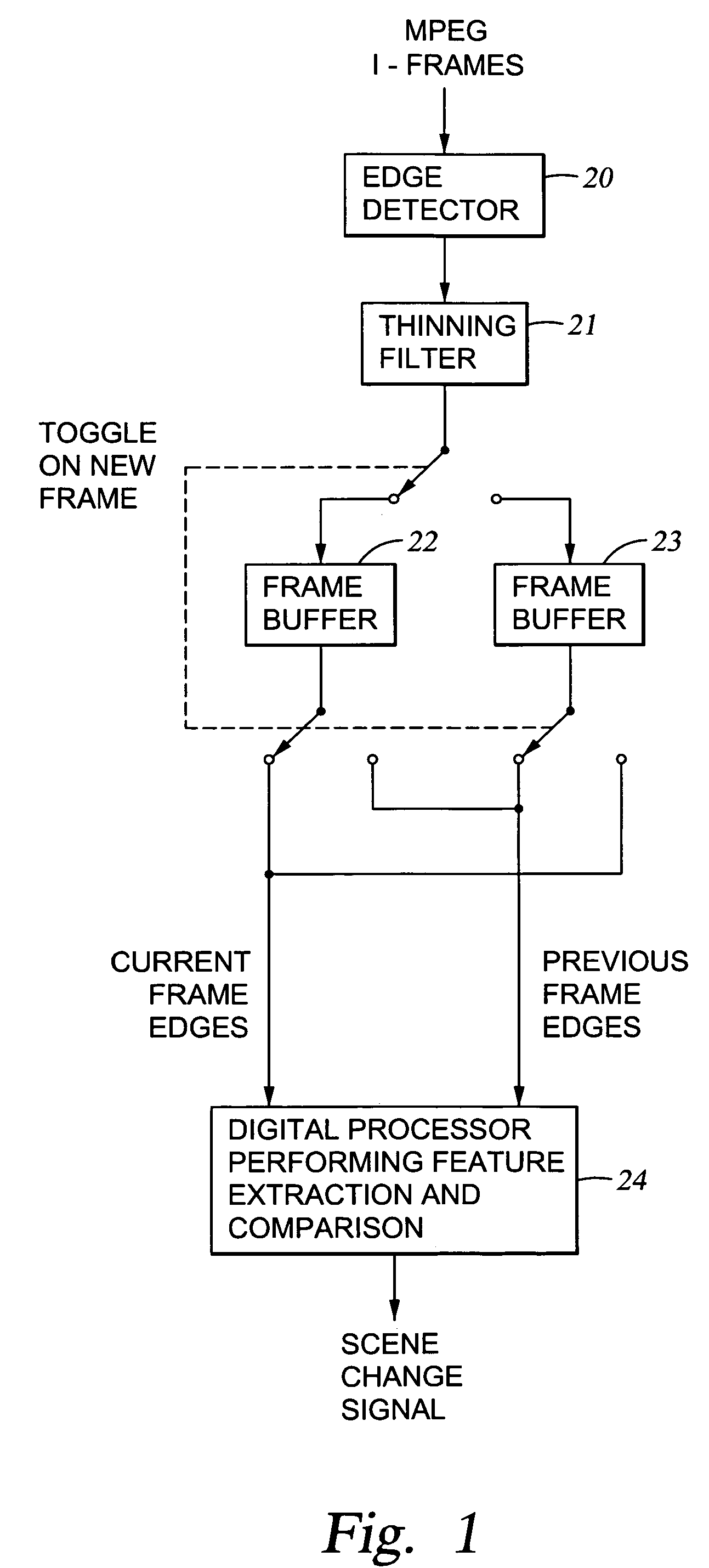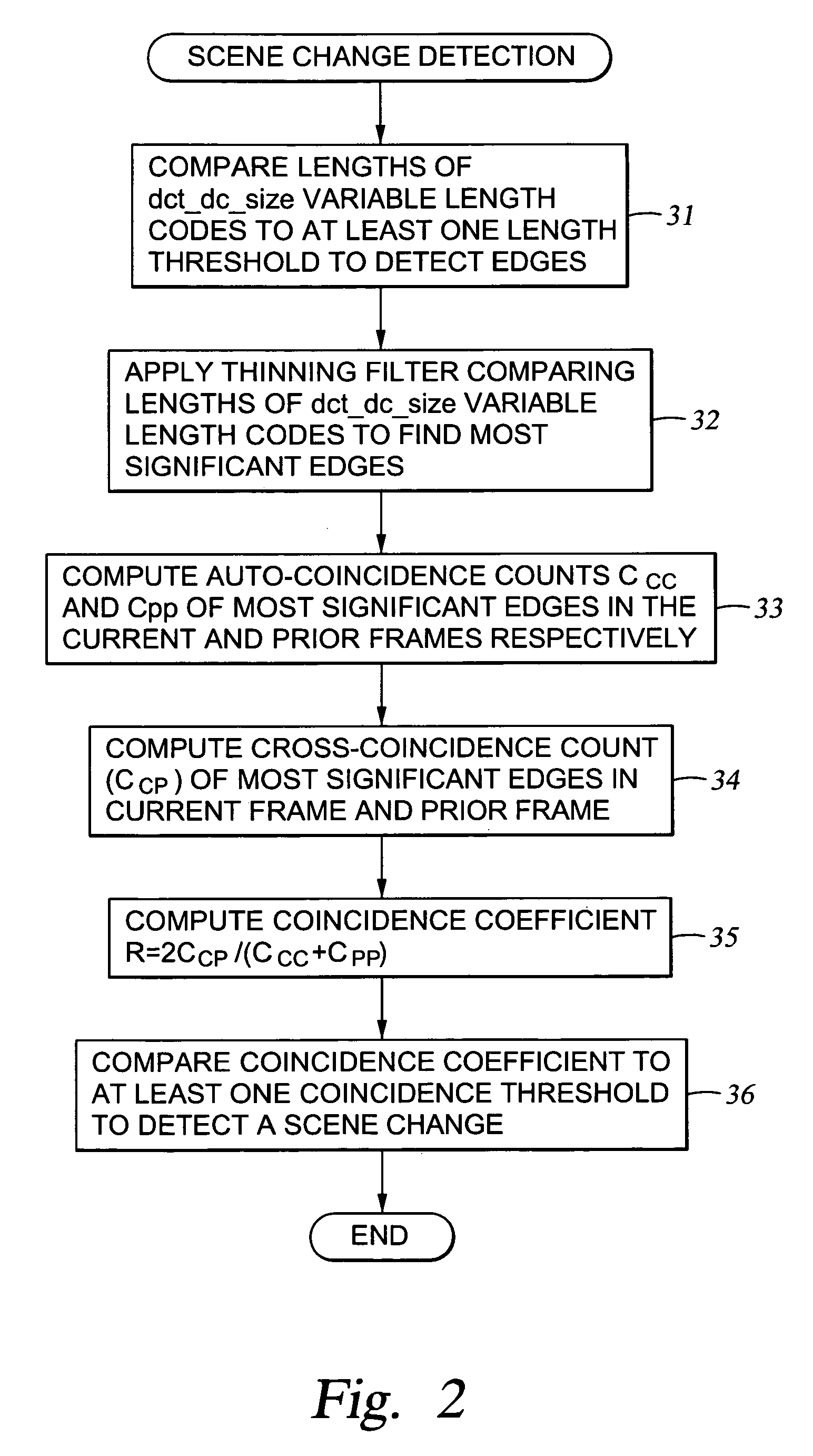Edge detection based on variable-length codes of block coded video
a block-coded video and variable-length code technology, applied in the field of compressed visual data processing, can solve the problem of computational intensive conventional methods for performing such a comparison
- Summary
- Abstract
- Description
- Claims
- Application Information
AI Technical Summary
Benefits of technology
Problems solved by technology
Method used
Image
Examples
Embodiment Construction
[0043]With reference to FIG. 1, there is shown a block diagram of a system for processing of an MPEG coded video stream to provide a scene change signal upon reaching a current video frame having features that are substantially different from features in the previous video frame. The features are comprised of edges. An edge detector 20 detects the edges occurring between and within blocks in each frame. A thinning filter 21 receives edge indications from the edge detector 20, and eliminates some of the less significant edge indications.
[0044]The thinning filter in effect refines the initial edge information and produces information that can be visualized as edge graph information. The amount of the thinning should be carefully selected, and a three-pixel deep thinning is preferred. The remaining edge indications are loaded into a selected one of two ping-pong (parallel) frame buffers 22 and 23.
[0045]In order to provide a scene change signal, a digital processor 24 accesses edge indi...
PUM
 Login to View More
Login to View More Abstract
Description
Claims
Application Information
 Login to View More
Login to View More - R&D
- Intellectual Property
- Life Sciences
- Materials
- Tech Scout
- Unparalleled Data Quality
- Higher Quality Content
- 60% Fewer Hallucinations
Browse by: Latest US Patents, China's latest patents, Technical Efficacy Thesaurus, Application Domain, Technology Topic, Popular Technical Reports.
© 2025 PatSnap. All rights reserved.Legal|Privacy policy|Modern Slavery Act Transparency Statement|Sitemap|About US| Contact US: help@patsnap.com



